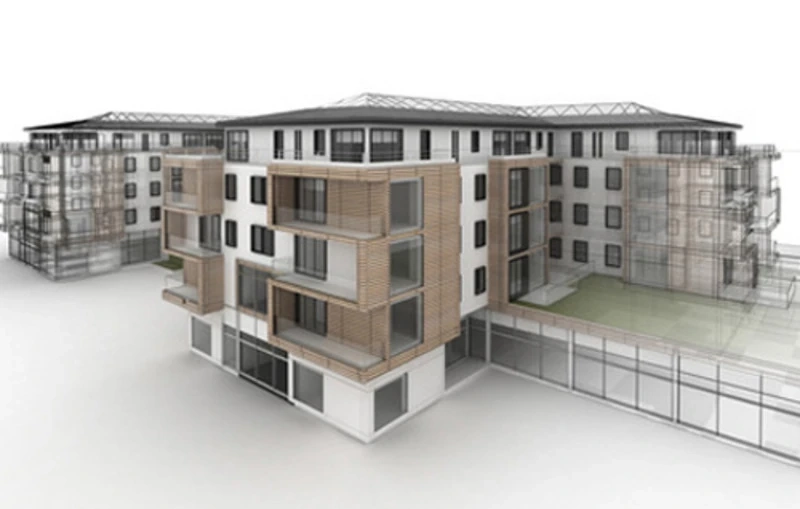In the ever-evolving construction industry, Building Information Modeling (BIM) has emerged as a game-changing technology. It has significantly transformed the way architects, engineers, and construction professionals approach building projects. Among its many applications, BIM structural modeling stands out for its potential to provide innovative solutions that enhance the efficiency, accuracy, and overall quality of construction projects. In this blog, we will explore the various aspects of BIM structural modeling services and how they are reshaping the construction landscape.
Understanding BIM Structural Modeling
BIM is a digital representation of the physical and functional characteristics of a facility. It serves as a shared knowledge resource, providing a reliable basis for decision-making throughout a building's lifecycle. Structural modeling within BIM involves creating a detailed 3D representation of the building's structural components, such as beams, columns, slabs, and foundations.
Benefits of BIM Structural Modeling
One of the primary advantages of BIM structural modeling is its ability to provide a comprehensive and accurate visual representation of the building's structure. This 3D visualization helps stakeholders, including architects, engineers, contractors, and clients, to better understand the design intent. It also facilitates easier identification of potential issues before construction begins, reducing the likelihood of costly modifications during the build phase.
Improved Coordination
BIM structural modeling promotes better coordination among various disciplines involved in a construction project. By integrating structural models with architectural, mechanical, electrical, and plumbing (MEP) models, BIM ensures that all aspects of the project are harmonized. This integration helps in identifying and resolving clashes and inconsistencies early in the design phase, leading to smoother project execution.
Increased Accuracy
Traditional 2D drawings can be prone to errors and misinterpretations. BIM structural modeling, on the other hand, offers precise and detailed representations of structural elements. This accuracy reduces the risk of errors in the construction process, resulting in higher quality and safer buildings. Additionally, accurate models help in generating reliable quantity take-offs and cost estimates, aiding in better budget management.
Streamlined Collaboration
BIM structural modeling encourages collaboration among project stakeholders. The shared digital environment allows for real-time updates and access to the latest information, ensuring that everyone is on the same page. This collaborative approach minimizes misunderstandings and delays, fostering a more efficient and productive project workflow.
Better Project Management
With BIM structural modeling, project managers have access to a wealth of information at their fingertips. They can track the progress of the project, monitor timelines, and manage resources more effectively. The ability to simulate construction sequences and visualize the project timeline helps in optimizing schedules and minimizing disruptions.
Key Applications of BIM Structural Modeling
BIM structural modeling enables engineers to optimize the design of structural elements. By analyzing different design alternatives within the BIM environment, they can identify the most efficient and cost-effective solutions. This process includes evaluating the performance of materials, structural integrity, and compliance with building codes and regulations.
Structural Analysis
Structural analysis is a critical aspect of any construction project. BIM structural modeling allows engineers to perform detailed structural analysis using advanced simulation tools. These tools help in assessing the behavior of the structure under various loads and conditions, ensuring that it meets safety and performance standards. The integration of analysis results with the BIM model provides valuable insights for decision-making.
Clash Detection
One of the significant challenges in construction projects is the occurrence of clashes and conflicts between different building systems. BIM structural modeling addresses this issue through clash detection tools. These tools automatically identify clashes between structural elements and other building components, such as MEP systems. Early detection of clashes allows for timely resolution, reducing rework and project delays.
Construction Sequencing
BIM structural modeling facilitates the planning and visualization of construction sequences. Project teams can create 4D models that link the 3D structural model with the construction schedule. This integration helps in visualizing the construction process over time, identifying potential bottlenecks, and optimizing the sequence of activities. It also aids in coordinating on-site operations and improving overall project efficiency.
Prefabrication and Modular Construction
The rise of prefabrication and modular construction methods has been greatly supported by BIM structural modeling. Detailed BIM models enable the accurate fabrication of structural components off-site, ensuring that they fit together seamlessly during assembly. This approach reduces construction time, minimizes waste, and enhances the overall quality of the final structure.
Real-World Examples of BIM Structural Modeling
A high-rise building project in New York City utilized BIM structural modeling to streamline its construction process. The BIM model included detailed representations of the building's steel framework, concrete slabs, and foundation. By integrating the structural model with the architectural and MEP models, the project team identified and resolved numerous clashes before construction began. The accurate visualizations also helped in communicating design intent to stakeholders, resulting in a smoother approval process.
Case Study 2: Infrastructure Project in London
In London, an infrastructure project involving the construction of a new bridge utilized BIM structural modeling for design optimization and structural analysis. Engineers created a detailed 3D model of the bridge's components and used simulation tools to analyze its behavior under different load conditions. The BIM model also facilitated clash detection, ensuring that the bridge's structural elements did not
interfere with existing utilities. The project was completed on time and within budget, with minimal disruptions to the surrounding area.
Challenges and Future Trends
While BIM structural modeling offers numerous benefits, it is not without challenges. Implementing BIM requires a significant investment in technology and training. Additionally, ensuring data interoperability and standardization across different software platforms can be a hurdle. However, the industry is continuously evolving, and these challenges are being addressed through advancements in BIM technology and the development of industry standards.
Looking ahead, several trends are likely to shape the future of BIM structural modeling:
The integration of AI with BIM holds great promise for the construction industry. AI algorithms can analyze vast amounts of data from BIM models, providing insights for design optimization, predictive maintenance, and risk management. AI-powered tools can also automate routine tasks, freeing up engineers and designers to focus on more complex aspects of the project.
Enhanced Collaboration through Cloud-Based Platforms
Cloud-based BIM platforms are becoming increasingly popular, enabling seamless collaboration among project stakeholders. These platforms allow for real-time data sharing, version control, and remote access to BIM models. Enhanced collaboration through the cloud will further improve project efficiency and reduce the likelihood of errors. Virtual Reality (VR) and Augmented Reality (AR) Integration The integration of VR and AR with BIM models is revolutionizing the way construction projects are visualized and managed. VR allows stakeholders to immerse themselves in a virtual environment, providing a realistic view of the building before construction begins. AR overlays BIM models onto the physical construction site, aiding in on-site inspections and quality control.
Sustainable Design and Construction
Sustainability is a growing concern in the construction industry. BIM structural modeling can play a crucial role in promoting sustainable design and construction practices. By analyzing the environmental impact of different design alternatives, engineers can make informed decisions that reduce the carbon footprint of the building. BIM also facilitates the use of energy-efficient materials and construction methods.
Conclusion
BIM structural modeling services are transforming the construction industry by providing innovative solutions that enhance visualization, coordination, accuracy, and collaboration. From design optimization to clash detection and construction sequencing, BIM is revolutionizing the way buildings are designed and constructed. While challenges remain, the future of BIM structural modeling looks promising, with advancements in AI, cloud-based platforms, VR/AR integration, and sustainable practices paving the way for even greater innovation. As the industry continues to embrace BIM, we can expect more efficient, cost-effective, and sustainable construction projects in the years to come.


